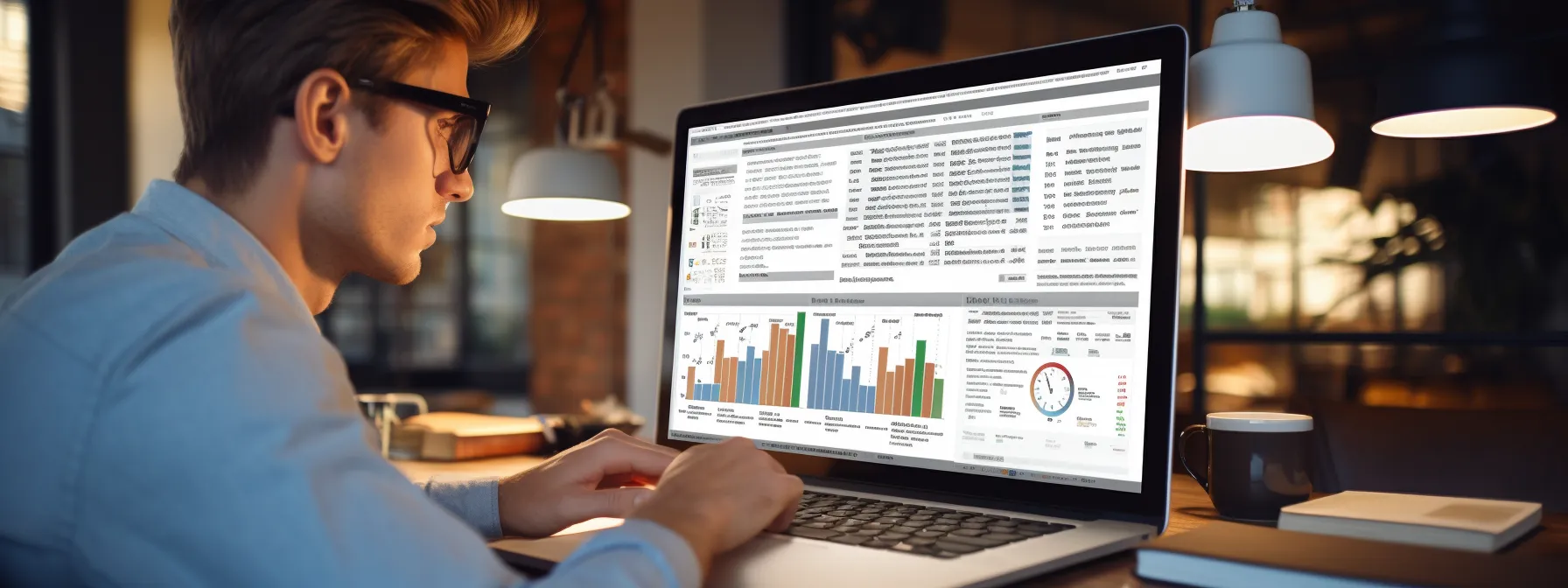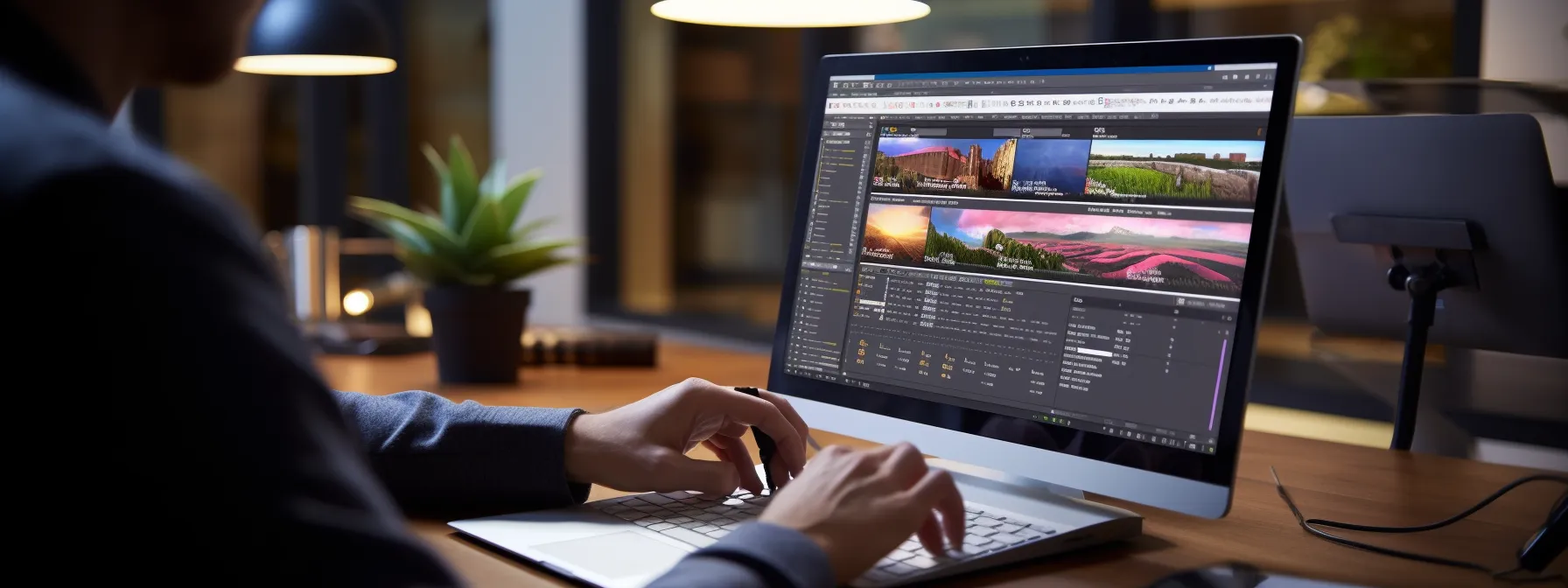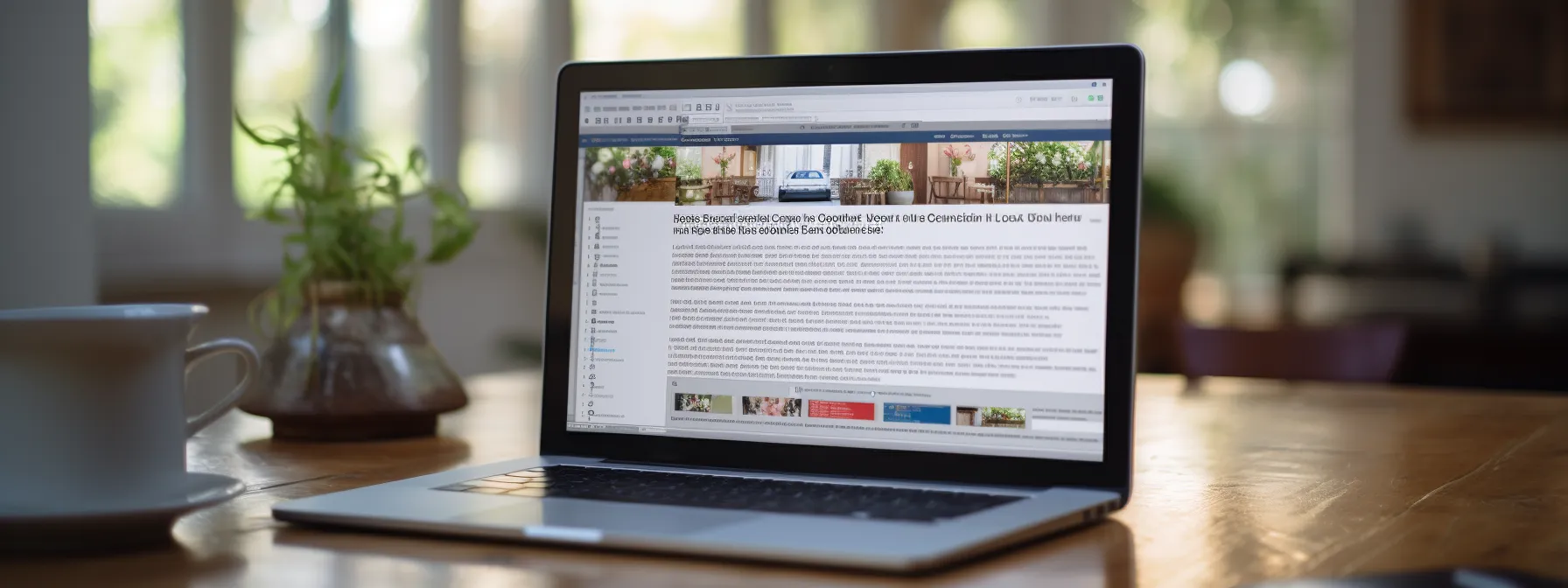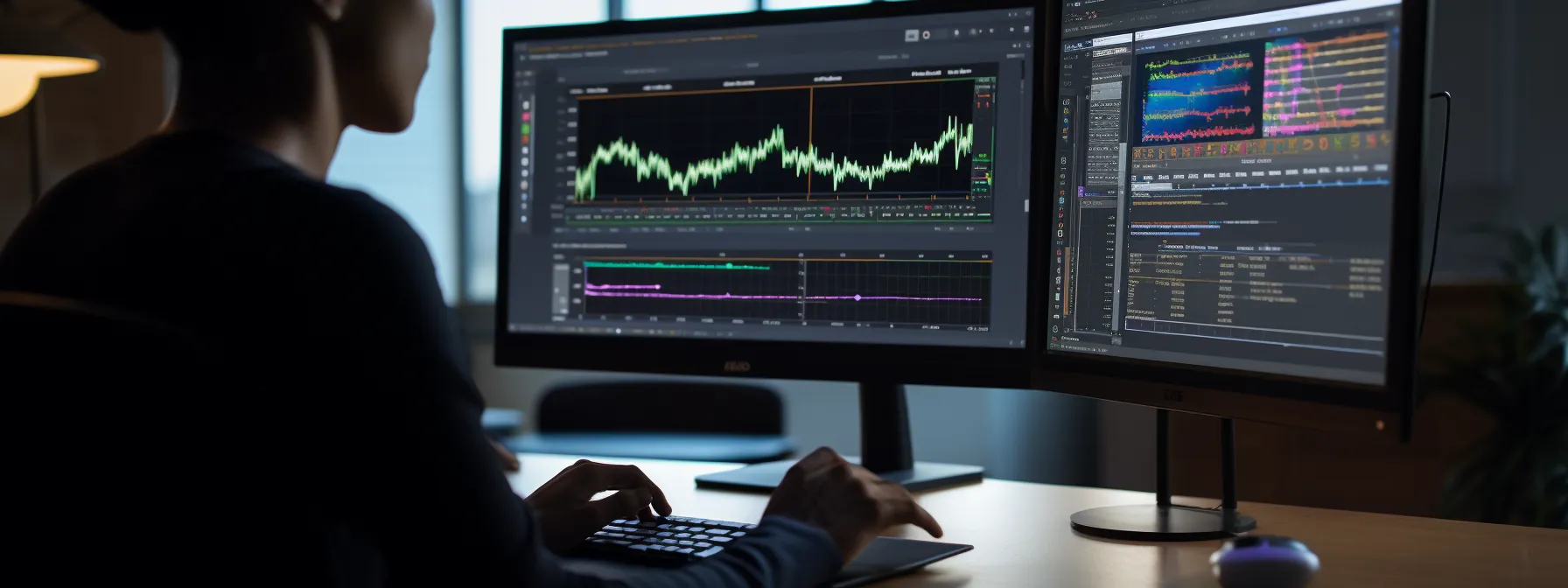Unlock Onpage Linking Success: Best Practices & Guidelines
Mastering Onpage Linking: Essential Rules and Recommendations Embarking on the journey to master onpage linking? Take heart. This exploratory piece provides a comprehensive guide on the essential […]
Mastering Onpage Linking: Essential Rules and Recommendations
Embarking on the journey to master onpage linking?
Take heart.
This exploratory piece provides a comprehensive guide on the essential rules and recommendations for honing your skills in onpage linking.
From the importance and effective rules of onpage SEO to the best practices for link optimization, get ready to dive deep into each concept in detail.
Keep reading to unlock impactful strategies and gain insights into exciting resources like Search Atlas by LinkGraph to boost your SEO techniques.
Key Takeaways
- Onpage Linking Is Vital for SEO Strategy, as It Enhances Visibility and User Experience
- Effective Internal Linking Strategies Vary Depending on the Type of Site Page
- Optimizing Anchor Texts and Link Positions Can Improve Page Ranking and User Engagement
- Managing Internal Linking Structure Requires Comprehensive Site Audits and Strategic Planning
- Outbound Links Should Be High-Quality, Relevant, and Regularly Updated for Maximum SEO Impact
Understanding Onpage Linking
Onpage linking represents a core component of SEO strategy, aiming to enhance the visibility of website pages in search engine results. Intuitively designed, content-rich site architecture can provide direct pathways to essential site pages, thus improving overall user experience.
It’s imperative not to underestimate the intrinsic value of internal linking and the coherent structure it provides. Think of each web page as an intricate part of the overall web application. As such, each page plays a role in fulfilling the searcher’s intent, thereby inflating the relevance and topical authority of the entire site.
One could argue that effective usage of anchor texts can bolster SEO outcomes, as they help search engines comprehend the context and purpose of the link. Moreover, careful structuring of such elements as anchor texts or alt texts can significantly improve the user experience, especially for technology users who rely on screen readers.
LinkGraph’s platform, Search Atlas, offers comprehensive SEO solutions, leveraging AI and natural language processing to augment organic search traffic. From boosting a site’s backlink profile to selecting ideal keywords, Search Atlas can serve as a reliable companion in the intricate world of SEO.
Importance of Onpage Linking in SEO

Onpage linking, the practice of interconnecting a website’s pages through hyperlinks, is imperative to solid SEO strategies. Its importance can be traced back to the foundational mechanism of search engines – crawling. Search spiders skim through the links present on a webpage and use them as roads to navigate through the website’s landscape.
Focused and well-executed onpage linking strategies can optimise the crawler’s journey, exposing more corners of a web application. This results in higher visibility of pages with the search engine, thus, translating into better ranking in search results. It is these strategic considerations that power meaningful SEO tactics like siloing, pillar pages, and breadcrumb navigation.
But what does effective onpage linking look like for different types of site pages? Let’s explore:
| Page Type | Onpage Linking Objective | Best Practices |
|---|---|---|
| Product Pages | Maintain relevance and topical authority | Linking to related product pages and category pages |
| Blog Posts | Serve informational intent and channel link juice | Internal linking to key service pages and embedding organic backlinks |
| Sitemap | Aid in better site indexing | Interlinking all major sections of the website |
For instance, SEO toolkits such as Search Atlas from LinkGraph can offer significant assistance in creating an optimal onpage linking strategy. With its automation features and AI-driven solutions, Search Atlas can turn the often convoluted path to SEO mastery into a smooth journey filled with strategic wins.
Rules for Effective Onpage Linking

A sound onpage linking strategy requires some fundamental rules due to the effect it can have on the overall SEO success of a website. First and foremost, the objective is to enhance the user experience whenever possible.
SEO tactics such as creating descriptive anchor texts for hyperlinks, inserting links that are relevant to the page content, and ensuring equity in internal linking are elements that aid user navigation and comprehension. Contextual domain relevance shaped by rule-based linking can make the SEO signal stronger, benefiting both site rank and the user experience.
However, it’s not just about linking. The ‘where’ and ‘how often’ of it matter too. The position of a link on a page and its frequency, also called link density, can influence page rank and SEO results in the long run:
| Link Position | Linking Impact | Considerations |
|---|---|---|
| Within the body of the content | High visibility, user engagement | Avoid link stuffing, maintain content clarity |
| In the webpage header | High accessibility, imparts site structure | Relevant for main site pages or essential features |
| In the webpage footer | Low user engagement, useful for utility links | Link to pages like Privacy Policy, T&C, Sitemap |
Aligning your SEO strategy with these recommendations can lead to noticeable improvements in page rank and organic search traffic. Furthermore, leveraging platforms such as Search Atlas can simplify the complex SEO landscape, offering solutions for effective keyword research, link building, and more.
Use Internal Linking to Boost SEO

Internal linking is a vital SEO factor that does more than just facilitate site navigation for users. It lays the groundwork for the distribution of ‘link juice’ or ‘page rank value’ across the web pages, thereby shaping the site’s ability to rank in search results. An efficient internal linking structure can improve the visibility and authority of important pages, effectively steering the search traffic in the desired direction.
When it comes to strengthening the SEO signal via internal linking, a website must start by identifying high-performing pages, termed as ‘pillar pages.’ By linking these pages to others with relevant content, the site can reinforce topical authority, which can in turn translate to better search engine performance. Noteworthy is that the context of the link matters heavily, as it offers cues to search engines about the linked page’s subject matter.
Platforms like Search Atlas come with built-in AI capabilities optimized for link building. These platforms can help with SEO tactics such as the generation of anchor texts, identification of link opportunities, and crafting of a balanced backlink profile.
Strategically employed, internal linking can prove to be a significant traffic and ranking booster for websites. Combined with best practices and advanced SEO tools, an internal linking strategy can unfold into a top-tier SEO plan capable of meeting the ever-evolving demands of the search engine landscape.
Techniques for Optimizing Your Internal Links

Optimizing internal links demands a multispectral approach, taking into account both SEO mechanics and user experience. The first step is a deep understanding of the site architecture. This includes a thorough analysis of the most significant pages, often referred to as ‘pillar pages’, their connection to other pages, and the overall flow of link juice within the site.
Anchor text optimization plays a crucial role in enhancing the performance of internal links. When crafting anchor texts, it’s vital to make them informative and relevant to the linked page’s content. Search engines rely heavily on anchor texts to understand the content and context of the linked page, making their optimization a key SEO factor.
Effective internal linking goes hand in hand with strategic content planning. Creating related content that naturally interlinks can bolster topical authority while improving the user’s on-site navigation. For example, in-depth blog posts can link back to product pages or include references to other relevant blog posts, creating an interconnected content web that fuels on-page SEO.
Technologies such as Search Atlas, with its AI-powered capabilities, streamline the internal linking process by facilitating anchor text generation and identifying potential linking opportunities. By integrating such tools into an SEO strategy, optimizing internal links becomes an achievable task that can lead to significant improvements in site rank and search traffic.
How to Manage Your Internal Linking Structure

Managing an internal linking structure might seem intimidating initially. Still, with the right approach, it becomes a highly manageable task contributing significantly to on-page SEO. Starting with a comprehensive site audit can provide a detailed understanding of the existing link structure, including elements such as redirects, orphaned pages, and broken links that need immediate attention.
Once the preliminary audit is complete, the focus shifts towards ensuring that the website’s most valued pages, often referred to as ‘pillar’ pages, are easily accessible and prominently featured. These pages should have ample internal links directing towards them to distribute page rank or ‘link juice’, thus enhancing their SEO value. For this, deep linking, that is, linking to inner pages instead of just the homepage, can be a beneficial strategy.
Constructing a clear and intuitive site hierarchy becomes the next logical step. This includes creating categories, subcategories, and an organized breadcrumb trail for user convenience. An organized site structure contributes to better user experience, which indirectly boosts SEO by decreasing bounce rates and increasing dwell time.
In an era driven by technology, using SEO tools such as Search Atlas can streamline the internal link management process. The software’s analytical features can help recognize and rectify any issue, ensuring a cleaner, more efficient website structure. Thus, wielding technology to manage the internal linking structure can lead to promising SEO results.
Recommendations for Using External (Outbound) Links

External or outbound links can serve as a critical SEO tool, provided they are used strategically. These hyperlinks, which lead to websites outside of one’s own domain, provide search engines with important context about the page’s content. Furthermore, linking to authoritative and relevant sources can lend credibility and enhance the page’s topical authority.
For a significant SEO impact, it’s crucial to consider the quality and relevance of the outbound link’s destination. Linking to trustworthy, high-authority websites can improve the overall SEO of the page, while links to low-quality websites can have the opposite effect. Similarly, linking to a resource that is not relevant to the content can confuse both users and search engine bots, negatively impacting SEO.
We have compiled some best practices for using outbound links:
- Select the targets for outbound links carefully keeping in mind relevance and authority
- Maintain a reasonable balance of outbound links, avoiding excessive linking which could dilute PageRank
- Use meaningful and keyword-rich anchor texts for outbound links
- Always check and update outbound links regularly to avoid linking to obsolete or dead pages
Relying on an advanced SEO tool such as Search Atlas can significantly simplify the process of managing outbound links. From offering recommendations for high-authority link targets to optimizing anchor text and context, this platform is equipped to assist in formulating a robust outbound link strategy.
Advanced Tips for Link Optimization

While basic linking strategies are essential for SEO, embracing more advanced tactics can propel a website’s search engine performance. The first step in this direction is to optimize the anchor text of hyperlinks. This not only includes using relevant keywords but also factoring in variations and LSI keywords, which can help cater to a wider range of search queries.
Furthermore, partaking in an ongoing audit and maintenance of the website’s backlink profile can bring in significant dividends. Using tools like Search Atlas, one can easily recognize and remove harmful links and spammy backlinks, nurture high-quality ones and find opportunities for new, beneficial ones. This application of AI to SEO proves especially useful when evaluating the quality of backlinks and providing strategic recommendations for improvement.
Another key factor in link optimization is paying close attention to the site’s page rank flow. The goal should be to direct the flow towards pages that need it the most. Strategic usage of ‘nofollow’ and ‘dofollow’ attributes can enhance the value of important pages while reducing the rank flow to less significant ones.
Finally, considering advanced concepts like Google’s BERT model and Google Passage ranking can be game-changing. These address how search engines understand the content and context of pages, which in turn impacts the function of links. Leveraging these insights by positioning and planning links in the content according to semantic SEO can significantly influence search engine performance.
Onpage Linking for Images: Best Practices

Images on web pages offer a unique opportunity for on-page linking, apart from elevating the visual appeal. An effective SEO strategy recognizes this opportunity and supplements images with alt text, title tags, and hyperlinks to further enhance user experience and SEO value.
The ‘alt text’ or alternative text attribute for images serves a two-fold purpose. Primarily, it provides a text alternative for screen reader users, ensuring accessibility remains uncompromised. Secondarily, it offers a place to embed target keywords, reinforcing the image’s relevance to the page’s SEO.
Like integrating keywords into alt-tags, embedding links into relevant images can also prove beneficial in on-page linking strategy. An image leading to an associated blog post or product page offers an appealing way to guide users towards desired actions or pages.
Remember, while stock images can save time, creating unique, relevant images can boost SEO more substantially, especially when paired with strategic on-page linking. It’s in these intricate details that platforms like Search Atlas can offer significant assistance, providing AI-powered solutions for link building, keyword selection, and other vital SEO tasks.
Influence of Mobile-Friendliness on Onpage Linking

In the era of smartphones and on-the-go internet browsing, mobile-friendliness becomes an essential attribute for websites, impacting their on-page linking strategy. Both users and search engines now prioritize websites that display well on mobile devices, leading to an upswing in rankings for mobile-optimized sites.
When considering on-page linking from a mobile-first perspective, touch-friendly and easily navigable hyperlinks are crucial. This implies sufficient spacing between links to prevent misfires and frustration that could potentially increase bounce rates. Furthermore, embedding deep links to relevant apps related to a website’s content can also enhance the mobile user experience.
It’s essential to note couple of factors when optimizing on-page linking for mobile platforms:
- Have a responsive design to ensure seamless link transitions
- Keep page load times in check and avoid intrusive interstitials
- Avoid using flash or other plugins that might not be mobile-friendly
- Use large, easily clickable links to enhance user experience
Advanced tools like Search Atlas can aid in optimizing website elements and strategies for mobile. From assisting in creating responsive designs to providing AI-driven solutions for mobile-friendly keyword selection and on-page linking, tools such as these can significantly enhance the mobile SEO success of a website.
Promoting Your Content Through Onpage Linking

In the spotlight of content marketing, on-page linking can serve as an effective tool to drive attention to significant content pieces on a website. Granting this role to hyperlinks, anchor texts become the potent tags leading the audience to rich, relevant information, thus creating a rich user experience.
Echoing this strategy, essential content such as pillar pages, popular blog posts, or flagship product pages should be made easily accessible via internal links. This approach not only promotes these pages but also spreads the ‘link juice’ or page rank value across the site, enhancing the SEO value for the entire web application.
Linking doesn’t always have to be direct. Clever SEO techniques involve using subtle cues like breadcrumb trails or ‘read more’ sections to guide users towards desired content. These strategies can effectively promote underperforming yet valuable pages, bringing them into the limelight.
With a companion like Search Atlas, implementing these tactics becomes simpler. Its AI-powered tools allow for trend analysis, anchor text optimization, and provide essential insights into the site’s architecture. Effortlessly steering traffic towards important content becomes a manageable task rather than an uphill fight.
Analyze Your Onsite Link Performance

Understanding and leveraging on-page linking for SEO success is only as effective as the follow-up. This implies that once an on-page linking strategy is in place, it’s essential to analyze its performance to gauge its effectiveness and areas that need improvement. A key aspect of this analysis is understanding the flow of page rank or ‘link juice’ within a website.
There are various tools and metrics available to assess link performance. For example, bounce rate can indicate whether the user found the linked page relevant or not, while time spent on the linked page can reflect its value for users. A sudden drop in page views or sessions can indicate broken links that need immediate attention.
Genuine SEO tools, like Search Atlas, can make the onerous task of link performance analysis seem like a breeze. With its comprehensive suite of SEO tools, evaluating link success, identifying weak spots, and implementing improvements becomes an achievable endeavor.
In conclusion, it’s worthy to note that iterative analysis and optimization of a site’s on-page linking strategy can lead to incremental enhancements in search traffic, user experience, and ultimately, the website’s commercial success.
Additional Onpage Linking Resources

The realm of on-page linking is an evolving field, consistently shaped and reshaped by advancing web technologies and shifting search engine algorithms. To stay ahead in the SEO game, it’s critical to stay informed and adapt strategies accordingly. This often involves accessing reliable resources that offer key insights and recent updates about the world of on-page linking.
Webinars, online workshops, and digital bootcamps can be beneficial sources of knowledge sharing and skill enhancement. These platforms often include activities and interactive sessions that help deepen understanding of concepts such as Semantic SEO, Natural Language Processing, and the Google BERT model, all of which directly impact linking strategies.
Moreover, comprehensive SEO platforms like Search Atlas are an invaluable resource. Such platforms not only provide tools for various aspects of SEO but also offer tutorials, guideline documents, and SEO checklists which form a part of robust SEO strategies.
In essence, a continuous learning approach, paired with access to the right resources and tools, can make mastering the intricacies of on-page linking both achievable and rewarding.
Frequently Asked Questions
What is onpage linking and why is it important for seo?
Onpage linking refers to the practice of linking different pages within a website using hyperlinks. These hyperlinks can be either within the same page or link to another page within the website. Onpage linking is crucial for SEO (Search Engine Optimization) because it helps search engines understand the structure and organization of a website, improves user experience, and boosts the overall visibility and ranking of the website in search engine results.
One of the primary benefits of onpage linking is that it assists search engines in crawling and indexing a website more efficiently. Search engine crawlers follow these links to navigate through the various pages of a website, helping them discover and understand the content more effectively.
When the internal pages of a website are properly linked, search engines can easily determine the relevance and importance of each page, thus improving the overall visibility of the website. In addition to making it easier for search engines to index a website, onpage linking also enhances the user experience.
When users visit a website, they often rely on links to navigate and find the information they are looking for. By incorporating internal links strategically, website owners can guide users to related or relevant content, allowing them to explore the site more thoroughly.
This not only improves user satisfaction but also increases the chances of users spending more time on the website, reducing bounce rates, and increasing the likelihood of conversions. Furthermore, onpage linking helps to establish a hierarchical structure within a website.
By categorizing and grouping related content together, internal links can help search engines understand the importance and value of different pages on the site. This structure also distributes the authority and ranking power across the website, boosting the overall SEO efforts. Internal links also allow website owners to prioritize certain pages by giving them more internal links, indicating their significance and relevancy to both users and search engines.
In conclusion, onpage linking is a critical aspect of SEO as it helps search engines understand the structure of a website, enhances the user experience, and improves the overall visibility and ranking of the website. By strategically placing internal links, website owners can guide both search engines and users to relevant content, increasing the chances of higher visibility, improved organic traffic, and better conversion rates.
Implementing a well-structured and well-thought-out onpage linking strategy is essential for any website looking to succeed in the competitive online landscape.
What are some rules and best practices for effective onpage linking?
When it comes to effective onpage linking, there are several rules and best practices that can help improve the overall user experience and SEO performance of your website. First and foremost, it is important to ensure that all links are relevant and useful to your readers.
Avoid adding unnecessary or unrelated links, as this can confuse and frustrate your visitors. Instead, focus on including links that provide additional information or resources that are directly related to the topic at hand. Another important rule is to use descriptive anchor text for your links.
Avoid using generic phrases like “click here” or “read more,” as this doesn’t provide any context to the user or search engines about where the link will lead them. Instead, use specific and descriptive anchor text that accurately reflects the content of the page you are linking to. For example, if you are linking to a blog post about SEO best practices, you could use anchor text such as “SEO best practices for improving website visibility.”
It is also recommended to include internal links throughout your website. Internal linking helps to establish a logical structure and hierarchy for your content, making it easier for both users and search engines to navigate and understand your website. When adding internal links, try to use relevant keywords as anchor text, as this can help improve the SEO value of your pages. In addition, it is important to regularly check for broken links on your website and fix them promptly. Broken links can negatively impact the user experience and can also lead to a decrease in search engine rankings.
Utilize tools or plugins that can help you identify and fix broken links on your website. Lastly, make sure to optimize your links for mobile devices. With the increasing use of mobile devices for browsing the internet, it is crucial to ensure that your links are easily clickable and accessible on mobile screens. Avoid using small font sizes or placing links too close to other elements, as this can make it difficult for users to tap on the intended link. By following these rules and best practices for effective onpage linking, you can improve the overall user experience, increase user engagement, and enhance the SEO performance of your website.
How can i use internal linking to improve my website’s seo?
Internal linking is an essential aspect of search engine optimization (SEO) that can greatly improve your website’s visibility and rankings. By strategically linking your website’s pages to each other, you provide search engines with a clear and organized structure of your site’s content.
This helps search engines understand the relevance and importance of specific pages, ultimately making it easier for them to crawl and index your site. When implementing internal links, it’s crucial to use relevant anchor text that includes keywords related to the linked page.
This not only helps users understand where the link will lead them, but it also provides search engines with additional context about the content of the linked page. Additionally, internal linking allows users to navigate your website more easily, thereby improving their overall experience and reducing bounce rates. By including internal links within your content, you can guide users to related or relevant articles, encouraging them to explore more of your website’s offerings.
Moreover, internal linking can also distribute link equity throughout your site, helping boost the visibility and rankings of important pages. Overall, by incorporating a smart internal linking strategy into your website, you can enhance its SEO efforts, improve user experience, and increase organic traffic from search engines.
What techniques can i use to optimize my internal links for better seo performance?
Internal linking plays a crucial role in optimizing a website for better SEO performance. By strategically linking different pages within your website, you can improve the overall user experience and help search engines understand the structure of your site.
When optimizing internal links, there are several techniques you can employ to enhance SEO performance. Firstly, use descriptive anchor text that accurately reflects the content of the linked page. This helps both users and search engines understand where the link will lead them. Secondly, ensure that your internal links are relevant and contextually appropriate. Connect related pages or content to strengthen the overall topical relevance of your site.
Additionally, it is advisable to have a balanced distribution of internal links throughout your website, avoiding excessive linking to a single page while neglecting others. This ensures that all your website’s pages receive an equal amount of link authority. Furthermore, consider using breadcrumb navigation to create a hierarchical structure that allows users and search engines to easily navigate through your website. Lastly, regularly audit your internal links to identify and fix any broken or outdated links, as these can negatively impact user experience and search engine rankings.
By utilizing these techniques, you can optimize your internal links for better SEO performance and improve the visibility of your website in search engine results.
Are there any recommendations for using external (outbound) links on my website?
Using external (outbound) links on your website can be a valuable strategy for improving your site’s SEO and user experience. When it comes to incorporating external links, there are a few recommendations to keep in mind.
First, ensure that the external websites you are linking to are reputable and relevant to your content. This helps build trust with both search engines and your audience. Additionally, consider the context in which you are including the external links. It’s important that the links provide additional value or information to your readers and enhance their overall experience on your website. Another tip is to use descriptive anchor text when linking out to external sources.
This helps search engines understand the relevance of the linked page and can boost the SEO of both your website and the linked page. Finally, regularly check your external links to ensure they are still active and up-to-date. Removing or updating broken links can improve your site’s user experience and prevent any negative impact on your SEO efforts. By following these recommendations, you can effectively leverage external links to enhance your website’s SEO and provide a better experience for your visitors.
Conclusion
In the evolving world of SEO, mastering on-page linking is crucial for anyone eager to boost their website’s visibility, traffic, and overall performance.
From internal linking practices that enhance user navigation to strategic external links that increase credibility, on-page linking serves multiple purposes.
It guides search engines through the site, improves user experience, and enhances the relevancy and authority of a page.
As we have explored, SEO tools such as Search Atlas can streamline the process, offering AI-powered solutions for various aspects of link building.
Above all, a commitment to continuous learning and adaptation to changing SEO dynamics paves the way for successful on-page linking strategies.
Remember, each hyperlink is an opportunity – a tool waiting to be used to its full potential.














































































